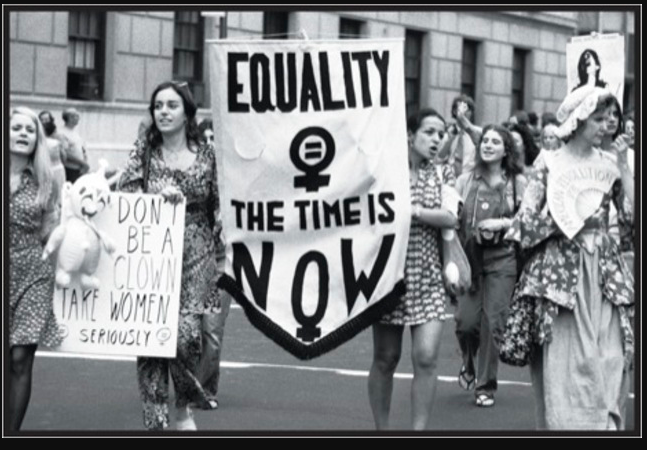What Does Lenin and The Yellow Wallpaper Have in Common? International Women’s Day
March 8, 2022
Today, March 8, is International Women’s Day. The holiday was political from the very beginning, as it began in 1909 when American women in the Socialist Party created it as a statement for women’s rights. Charlotte Perkins Gilman–author of The Yellow Wallpaper–gave a speech demanding women’s rights.
Women’s Day was not popular in America, however. It only took off when Clara Zetkin (a German feminist) pushed for it to be a holiday in Europe, and the first International Women’s Day was held on March 19, 1911 in France, Germany, Austria, and Switzerland. Women used it to campaign for the right to vote, to work, and to hold public office. For example, Sylvia Pankhust, a famous British suffrage and socialist, was arrested on the way to a protest for International Women’s Day in 1914. Russian women went on strike for the end of war, end of food shortages, and the end of the tsar on Feb. 23, 1917 of the Gregorian calendar. Protests turned into riots in St. Petersburg. Nicholas II tried to go to St. Petersburg, but the Duma (Russian Parliament) turned on him and barred him from boarding the train. The Duma also set up their own emergency government with no tsar. Nicholas sent troops to quell the riots, but the troops mutinied. With no support left, he had no choice but to abdicate just seven days later. These protests were the catalysts for the end of the Russian monarchy.
No one knows why the holiday is March 8, but one theory is it is to commemorate the Russian women’s strikes because they occurred on March 8, of the Western calendar. Russia’s new government was the first major nation to grant women the right to vote, and Lenin (the leader of Russia’s Communist Party) declared Women’s Day an official holiday in 1917.
Women’s Day spread to other communist and socialist countries. Because of this, in Cold War-era America, the myth that International Women’s Day was started to remember a strike by female garment workers circulated. China declared March 8 a half-day of work for women in 1949. It was only an occasion in socialist and communist countries until the mid 1970s. In 1974, the UN recognized International Women’s Day. By 2014, it was an official holiday in 25 countries. The holiday is mostly celebrated in socialist or communist countries, such as Poland, Ukraine, Argentina, Cuba, and China. Women get flowers, greeting cards, maybe a day off work, and people march in parades and protests.
International Women’s Day has started to make a comeback in America by big corporations integrating it into their ad campaigns, similar to how every department store puts out a “pride month collection” in June. You probably remember the commercial Hershey’s put out two years ago for International Women’s Day. At first, footage of their packaging from years gone by plays while the voiceover explains that there is a she in Hershey’s. The voiceover then announces that they will be highlighting the she on the Hershey’s packaging and include artwork by a woman on each candy bar for International Women’s Day. Voiceover person then says “Best of all, women loved it!” It fades to black.
International Women’s Day was a day to rally for women’s rights in the early 1900s. In the mid-1900s, it evolved into a hoilday where women get cards and flowers. In the past couple of years, it has been used to sell products. But what does International Women’s Day mean to women now?



